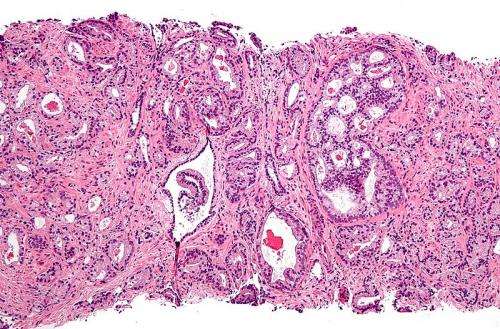
Prostate cancer is the second-most diagnosed cancer in men after skin cancer. Approximately 1 of 9 men in the U.S. will get prostate cancer in his lifetime. Most men diagnosed with the disease won’t die from it. More than 3.1 million American men are living with a prostate cancer diagnosis, according to the American Cancer Society. But the disease kills roughly 2%-3% of men in the U.S. every year.
“When you look at five-year survivals—and that’s a metric that most organizations use to determine prostate cancer aggressiveness—prostate cancer, even in some of the advanced stages, still has nearly 100% five-year survival. And that’s different than the perspective of someone having pancreatic cancer or brain cancer, where the five-year survival is not even 15% at times,” says Dr. Raymond Pak, a Mayo Clinic urologist. “Between five to 10 years, survival for untreated prostate cancer also can approach 100% for certain types of prostate cancer. So I do counsel patients based on that and tell them to put things in perspective. I encourage all my patients to make long-term plans still and to have a positive outlook because the landscape of prostate cancer treatment is also changing, and it’s a dynamic process.”
Early detection often is key to survival. Prostate cancer screening guidelines consider a number of risk factors, including age, race and family history.
“Currently, the American Urologic Association supports screening for men at average risk between the ages of 55 and 69. And then prior to 55, it should really be a shared decision and discussion based on risk factors,” says Dr. Pak. “So what are those risk factors? Men with a family history of prostate cancer is one example. Significant family history would be a first-degree relative, such as a father or brother with prostate cancer, or a more distant relative, but at least two affected distant relatives with prostate cancer. And then any other strong family history of hereditary colon, breast cancers, as well as prostate, of course, should be considered in a younger age group. So between 40 and 55 is that high-risk group that we need to screen for if there’s a strong family history or race. African American men should also be considered to be screened earlier under 55.”
Prostate cancer screening involves the combination of a prostate exam by a health care provider and a prostate-specific antigen blood test. Unlike some types of cancer, prostate cancer often has no symptoms. And if a man develops symptoms, it usually means the cancer is at an advanced stage.
“Symptoms such as blood in the urine, painful urination, inability to urinate, or pain in the hips and spine—those can all be very advanced presentations of prostate cancer. So that’s exactly the reason why we screen men actively in the specific age groups, because there are no symptoms whatsoever,” says Dr. Pak.
Source: Read Full Article
